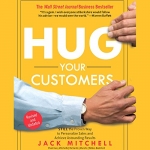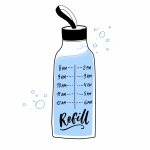 Today’s post was contributed by guest Ruth Sternberg, a coach who helps mid-career professionals more effectively convey their value to employers and entrepreneurs capture more market share with clearer branded materials. She can be reached at Ruth@confidentcareersearch.com .
Today’s post was contributed by guest Ruth Sternberg, a coach who helps mid-career professionals more effectively convey their value to employers and entrepreneurs capture more market share with clearer branded materials. She can be reached at Ruth@confidentcareersearch.com .
You can also connect with her at https://www.linkedin.com/in/navcoach/.
Congratulations! You have started your own business. You have courage. You have a mission. But how do you know your product or service will sell?
This is the driving question for all entrepreneurs. The same question causes job seekers stress as they hit “send” and wait for a reaction to an application submission. Most of us, whether we are working for ourselves or looking for a job, go about answering the question backwards. We assume that our idea is great, and that our skills speak for themselves. Friends and family have said so. We are sure everyone else will agree, so we adopt the “build it and they will come” philosophy.
We might hit it out of the park, as in the movie Field of Dreams. But will the stadium be empty? Selling anything, whether it be your skills, a product, or your consulting services, requires an understanding of what your customer—or in the case of a job seeker, the employer— needs. It sounds obvious. But in the age of social media and instant gratification, it’s not so simple. Today’s consumers are sophisticated. They don’t take promises at face value. Companies do not hire candidates just because they have the required technical skills.
Today’s “buyer” wants validation. It can be customer reviews, your LinkedIn recommendations, the quantifiable proof you give on your resume, or your social media posts. Top marketing voice Mark Schaefer, author of Marketing Rebellion: The Most Human Company Wins, points out that marketing a product requires a competitive advantage. To sell successfully, you must identify an unmet need and then build your message around that. Most companies confuse “what they sell” with “what the customer actually buys.” A tech company might have a great product. But the customers are really buying the great customer service. Starbucks doesn’t sell coffee; it sells community.
A job candidate might have all the right training and degrees, but hiring managers are really buying the ability to identify and solve problems, get along with different kinds of team members, and grow profits. Think about it: When an ad pops up in your Facebook feed, or when you are perusing Amazon or looking for a roofing contractor, do you just click “buy” without proof that you won’t waste your money?
Today’s consumer faces hundreds of choices and needs some way of differentiating one service provider (or job candidate) from all the others on the market. Here’s what you must do if you want to differentiate yourself in a competitive market:
Identify your customer. Who will make the decision to buy? Is it a mom? A CEO? A hiring manager? What do they prefer? What are their characteristics? What does the hiring company specialize in? What problems does it solve? What decisions does it face?
Figure out where your customer (or hiring manager) is. Is it on Facebook? Reddit? An industry website? Twitter? Maybe your customer supports a certain cause and is part of a Meetup or Facebook group talking about that. Are industry leaders members of a professional organization? Is there a Zoom event that will attract people in your industry? Are you on LinkedIn? Show up where your customer is and contribute to the conversation to find out what you need to deliver.
Decipher what makes you relevant to the buyer. Great service? Commitment to supporting certain values? Have you solved significant problems for your previous employers? What are they? Research the targets. Read articles, websites, and ask insiders.
Determine how to deliver your message of relevance. Content can sell, whether it’s video, social media content, or other avenues. Job seekers know they need a great resume. They also need fully keyword-optimized LinkedIn profiles. Check your marketing materials. Are they addressing the customers’ chief concerns? Create ways to engage! Will you write a cover letter? Post a LinkedIn article? Get seen and noticed!
Measure and adjust. Collect sales data. Look at your social media metrics. Who’s following you? Are they engaging with you? Job seekers: Document your progress as you apply for roles, noting whom they’ve talked with and what responses they received.
Winning the sale or the job offer is not magic. It is not instant or simple. But if you are struggling with your strategy, these tips should get you started down the right path.
.











Follow us online!